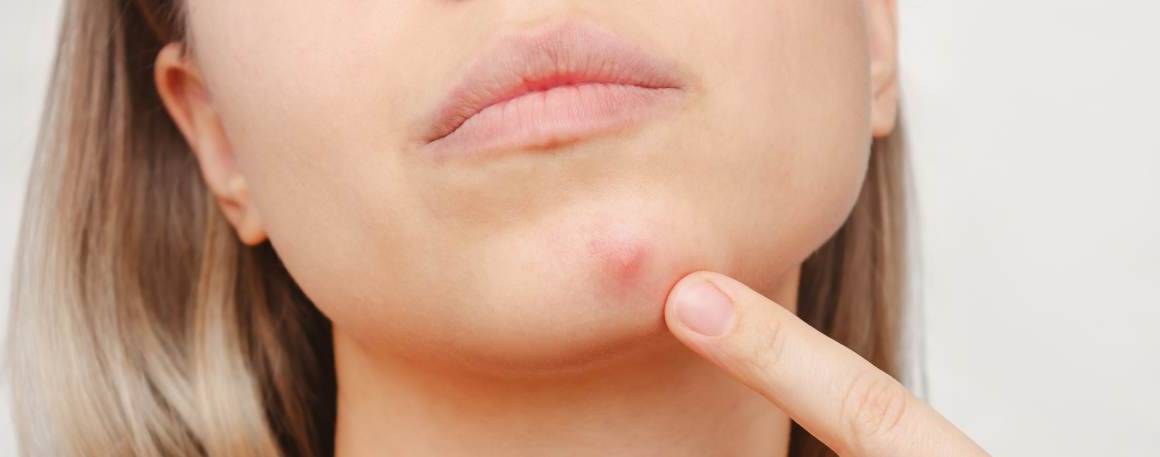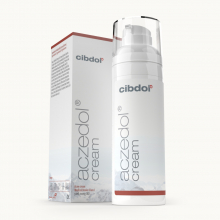Does Ice Help Acne?
Published:
Acne is one of the most common skin conditions, affecting up to 50 million Americans each year. It can be painful, embarrassing, and frustrating to deal with. Many people search for solutions to get rid of acne fast, wanting clear skin as soon as possible. One home remedy that has become popular is using ice to help improve acne. But does ice really help acne?
Contents:
- How Ice Might Help Acne
- Evidence on Ice for Acne Treatment
- Effective Methods to Use Ice for Acne
- When to Avoid Icing Acne
- Other Helpful Tips for Using Ice on Acne
- Are There Risks to Icing Acne?
- The Takeaway: Does Ice Help Acne?
- Frequently Asked Questions About Icing Acne
- What type of ice is best to use on pimples?
- How long should I leave ice on acne?
- Is it okay to ice acne overnight?
- Will icing acne help heal pimples faster?
- If my skin gets numb after icing acne, should I be concerned?
- Can I ice acne after a facial or chemical peel?
- Will icing reduce acne scarring?
- Is it safe to ice cystic acne?
- Can I ice my acne after I work out at the gym?
- If icing irritates my skin, should I stop treatment?
- Is it okay to ice acne while I’m on prescription acne medication?

How Ice Might Help Acne
There are a few ways that ice could potentially help with acne symptoms:
- Reduces inflammation - Acne consists of red, inflamed lesions on the skin. The cold from ice can constrict blood vessels and help decrease swelling and redness of pimples. This can make acne look less angry.
- Closes pores - Applying something icy cold to the skin causes pores to temporarily contract and close up. This could prevent additional oil and bacteria from getting trapped inside pores and forming more pimples.
- Numb sensation - The coldness of ice can numb the pain and irritation of acne breakouts. The numbing effect is temporary, but can provide relief for a short time.
So in theory, ice sounds like it could be beneficial for acne! But is the theory backed up by evidence? Let's dive deeper...
Evidence on Ice for Acne Treatment
There are currently no scientific studies investigating ice specifically for acne treatment. However, we do have research on how cold temperatures affect the skin and acne lesions. Here are some key points:
- Cold temperatures reduce inflammation in the skin. Multiple studies confirm that cooling reduces inflammatory chemicals and markers associated with conditions like acne.
- Cold therapy constricts blood vessels, lowering blood flow to the area. This reduces redness and swelling around acne breakouts.
- Evidence shows cooling acne lesions directly can inhibit growth of acne-causing bacteria. The cold temperatures make it harder for the bacteria to multiply.
- Applying cold compresses limits swelling, pain, and itching caused by inflammatory acne lesions. Patients report cold therapy provides temporary soothing relief.
So while we don't have direct data on ice for acne, the evidence we do have on cold therapy supports the theory that ice could help with acne symptoms like redness, pain, and swelling. More research is still needed though.
Effective Methods to Use Ice for Acne
If you want to give ice a try for your acne, here are some tips to use it effectively:
- Wrap ice in a clean cloth - Don't apply ice directly to skin, as this can damage skin tissue. Wrap ice cubes or an ice pack in a soft towel or cloth.
- Limit to 5-10 minutes - Only keep ice on the skin briefly, for 5-10 minutes maximum. Any longer than 10 minutes risks frost damage.
- Focus on inflamed breakouts - Target ice therapy only to red, swollen pimples. Don't ice areas with no active inflammation.
- Allow skin breaks - Give your skin a break between icing sessions, at least an hour. Icing too frequently can disrupt healthy blood flow.
- Never on open wounds - Don't use ice on broken acne lesions or open wounds, as this can increase risk of infection.
When to Avoid Icing Acne
While generally safe when done properly, icing acne is not appropriate in all situations:
- If you have circulation problems or sensitivity to cold, avoid icing acne. It could decrease blood flow too much.
- Ice should not touch an open wound or broken skin, including popped or picked pimples.
- If you have a skin condition like cryoglobulinemia that affects your response to cold, do not ice acne.
- Avoid icing if you are using topical acne medications that increase skin's photosensitivity, like retinoids.
- Do not ice cystic acne lesions. The large, deep lesions need warm compresses to help bring them to a head.
Always consult your dermatologist if you are uncertain whether icing is suitable for your specific type of acne.
Other Helpful Tips for Using Ice on Acne
To maximize results and safety when icing acne, keep these tips in mind:
- Prep skin first by washing with a gentle cleanser. Make sure skin is clean before icing.
- Apply ice wrapped in a soft cloth to prevent skin damage. A small hand towel works well.
- Use an ice pack or ice cubes - neither should ever directly touch bare skin.
- Hold ice gently against affected area and move occasionally. Don't vigorously rub ice on skin.
- Follow icing with a light moisturizer to soothe and hydrate skin.
- If icing irritates or dries out skin, take a break for a few days.
- Never ice acne after facials/chemical peels until skin has fully healed.
- For severe inflammatory acne, ask your dermatologist if icing could be helpful.
Are There Risks to Icing Acne?
Icing acne is generally considered low-risk, but potential side effects include:
- Temporary numbness - Skin nearby treated area may feel numb briefly after icing. This resolves after ice is removed.
- Cold burn - If ice directly contacts skin for too long, it can damage tissue and cause frostbite. Always buffer ice with a cloth.
- Vasoconstriction - Extreme cold narrows blood vessels. Limit icing sessions to avoid reduced blood flow.
- Rebound redness - Repeated icing can disrupt body temp regulation and worsen inflammation after the ice is removed.
- Irritation - Rubbing ice vigorously on skin or icing too often can cause irritation and dryness.
So while icing acne has low risk when done carefully, misusing ice can damage skin. Follow the proper guidelines to stay safe. Tell your doctor about any negative reactions.
The Takeaway: Does Ice Help Acne?
Based on the evidence, ice therapy likely provides temporary relief for some acne symptoms when used correctly. It can reduce redness, pain, and swelling around inflammatory breakouts by constricting blood vessels and lowering skin temperature. However, research specifically on icing pimples is currently lacking. Always use caution and consult your dermatologist, especially if you have certain skin conditions or sensitivities. Icing alone will not cure acne or prevent breakouts. But combined with proven acne treatments, ice may be a helpful addition for managing flare-ups.
Frequently Asked Questions About Icing Acne
What type of ice is best to use on pimples?
Either ice cubes or an ice pack work. Ice cubes can be molded to the contours of the face, but melt quickly. Ice packs stay colder for longer, but may not fit facial contours as well. Make sure whichever you use is wrapped in a soft cloth before applying.
How long should I leave ice on acne?
Only ice active breakouts for 5-10 minutes at a time. Any longer than 10 minutes can damage skin tissue. Allow at least an hour between icing sessions to let skin return to normal temperature.
Is it okay to ice acne overnight?
No, do not leave ice on acne overnight. This risks severe skin damage from extreme cold exposure for too long. Only apply ice for 5-10 minutes max at one time.
Will icing acne help heal pimples faster?
Unfortunately, no. Icing alone will not speed up the life cycle of a pimple or directly treat the acne. But it can provide temporary relief for swelling and redness during a breakout.
If my skin gets numb after icing acne, should I be concerned?
Temporary numbness up to an hour after icing is normal and expected. But if the numbness persists for several hours or areas far from treated skin go numb, stop icing and see your doctor.
Can I ice acne after a facial or chemical peel?
Do not ice acne after facials or chemical peels until your skin is completely healed, usually one week. Icing too soon could severely damage skin recovering from these treatments.
Will icing reduce acne scarring?
There is no evidence that icing alone improves acne scarring. Scars form after a blemish has already healed. But icing active pimples may limit additional inflammation, reducing the potential for more scarring.
Is it safe to ice cystic acne?
No, do not ice severe cystic lesions. The large, deep cysts need warm compresses to help bring them to a head. Icing could worsen cystic acne. See your dermatologist for treatment.
Can I ice my acne after I work out at the gym?
Yes, icing right after exercise is safe as long as you properly cleanse sweat from your skin first. Icing reduces inflammation caused by heat and sweat trapped in pores.
If icing irritates my skin, should I stop treatment?
Yes, take a break if icing causes significant irritation, dryness, or discomfort. Let your skin recover before trying again. If problems persist, discontinue icing and ask your dermatologist for advice.
Is it okay to ice acne while I’m on prescription acne medication?
Discuss with your dermatologist first. Most topical acne treatments are safe to use with proper icing methods. But icing could cause irritation when combined with certain harsher prescription treatments.















